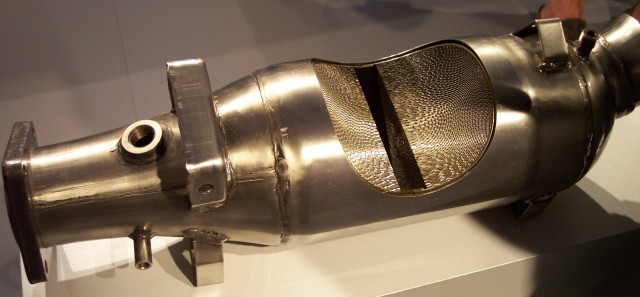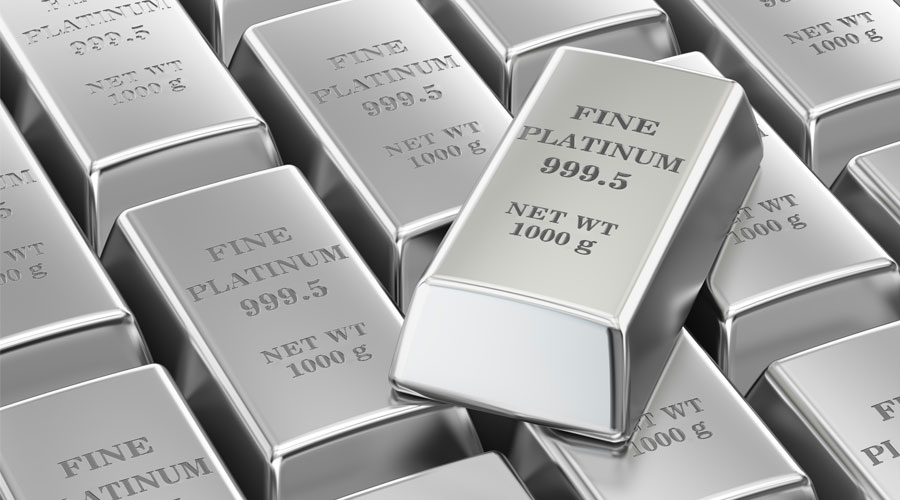
The Best 16 Interesting Facts about Palladium Revealed!
Interesting facts about palladium
Palladium is a rare and precious metal used for centuries for various purposes. So let’s learn those interesting facts about palladium.
10 interesting facts about Palladium
It was first discovered in 1803 by William Hyde Wollaston in England.
At one time, palladium was used as an early treatment for tuberculosis
Palladium is a rare and precious metal, with the atomic number 46 on the periodic table.
Aqua regia is the only known solution that can completely dissolve palladium.
In certain amounts, palladium is prone to spontaneously igniting in the air.
Palladium’s melting point of 1554°C makes it easier to work with than these other metals.
It can absorb up to 900 times its own volume in hydrogen gas at room temperature and pressure.
There are seven natural isotopes of palladium.
Palladium can also be recovered as a nuclear waste product from spent fuel rods.
Palladium has an exceptional ability to absorb hydrogen gas. And used in fuel cells as a catalyst for the electrochemical oxidation of hydrogen fuel.
What is Palladium?
Palladium is one of the noble metals. A rare silvery-white metal that belongs to the platinum group of elements.
Named after the asteroid Pallas. Discovered two years before palladium was first identified in 1803. By William Hyde Wollaston. an English chemist who was studying the properties of platinum.
Wollaston produced palladium. By dissolving platinum in a mixture of nitric acid and hydrochloric acid. Noticing that a second element remained.
Richard Chenevix announced the metal to be a fake, but Wollaston got the last laugh.
In 1805, he presented to the Royal Society of London. Proving palladium as the element’s discoverer when concluding his speech.
Palladium has several unique properties that make it useful in various applications.
For instance, it is resistant to corrosion and tarnishing. Making it an excellent material for jewelry and dental fillings.
One interesting fact about palladium. It has the ability to absorb hydrogen gas at room temperature. And release it at high temperatures.
This property makes it valuable in catalytic converters. Used in automobiles to reduce harmful emissions.
Additionally, palladium is also used in the electronics industry. As a component for capacitors and connectors due to its high conductivity.
Although unknown compared to other precious metals like gold or silver. palladium’s value has been increasing over the years.
Due to its diverse applications across industries. Such as automotive, electronics, medicine, and jewelry-making.
As more uses become discovered for this element through ongoing research studies. We can expect to see even more interesting facts emerge about this versatile metal.
Palladium in Ancient History

Its use dates back to ancient history. In fact, palladium’s name traces back to the Greek myth of Pallas Athena. Where it’s believed that the goddess had her own statue made of this metal.
Beyond mythology, palladium has played a significant role in various ancient civilizations.
For instance, Incas lived in present-day Peru. Used palladium for their sacred objects and jewelry.
The Egyptians also valued this metal. And used it for decorative purposes such as adorning their tombs and mummies.
Yet, it was not until the Middle Ages. That palladium became an integral part of the world’s most powerful empires.
The Spanish Conquistadors used this metal. In their armor and shields to make them stronger.
Considered a symbol of wealth and prestige in ancient times. Palladium also has unique properties which make it useful in modern times.
It is an excellent catalyst for chemical reactions. Making it valuable for industrial processes. Such as pollution control systems and automobile catalytic converters.
The rich history of palladium makes it an intriguing element. With both cultural significance and practical uses today.
Where is palladium found?
Palladium is a rare and precious metal found in the Earth’s crust.
It belongs to the platinum group of metals (PGMs). And shares many of its physical and chemical properties with other platinum metals. Such as platinum, rhodium, ruthenium, iridium, and osmium.
The world’s largest palladium producer is Russia. Followed by South Africa, Canada, and the United States.
Palladium deposits are found in association with other minerals. Such as gold, silver, copper, nickel, and platinum.
The majority of palladium mines are located in regions where these minerals are abundant. Such as the Bushveld Igneous Complex in South Africa. Which accounts for around 50% of global production.
Other significant sources include the Norilsk-Talnakh region in Russia. Which contains one-third of international reserves.
South America is home to some of the world’s largest palladium reserves. Countries like Brazil and Colombia have significant deposits.
Apart from mining activities on land areas. There has been an increasing interest among scientists.
Who wants to explore deep-sea deposits for palladium? Due to dwindling supplies of land.
These underwater deposits contain vast quantities of valuable metals.
Including palladium but their extraction poses enormous technical challenges that need advanced technologies.
Uses of Palladium Today

Palladium is one of the precious transition metals. It has many applications in various industries.
One of its primary uses is in the automobile industry. Where it plays a critical role as a catalytic converter.
Palladium helps to reduce harmful emissions from vehicles, making them more environmentally friendly.
It is also used in the production of electronics and computer components. Due to its excellent conductivity and durability.
Surgical instruments are an essential part of the medical world.
They play a crucial role in ensuring surgeries are conducted safely and effectively.
Palladium has proven to be a useful material for manufacturing surgical instruments. Due to its unique properties.
Palladium is non-toxic, corrosion-resistant, and biocompatible. Making it an ideal choice for surgical tools that come into contact with the human body.
Besides these industrial uses. Palladium’s valued for its aesthetic properties as well.
Its lustrous silver-white appearance makes it an attractive choice for jewelry designers. Who wants to create pieces with a contemporary look?
Palladium’s strength and resistance to corrosion. Make it ideal for crafting high-quality watches that can withstand wear and tear.
Another interesting fact about palladium is that it can be an investment option. Like gold or silver.
The demand for palladium has been growing over the years. Due to its use in the automotive industry.
As such, investing in this precious metal has become popular among investors. Looking for stable long-term returns on their investments.
Palladium’s unique properties have made it one of the most versatile metals today. With various applications across several sectors and industries globally.
Palladium rings
Palladium is a rare and precious metal that has gained popularity in recent years. It’s an alternative to platinum for your engagement ring or wedding rings.
This metal has a silver-white color, high durability, and low maintenance requirements.
It is also lightweight compared to other metals like gold or platinum.
Palladium is part of the platinum group of metals. Which includes iridium, osmium, rhodium, ruthenium, and platinum.
What are palladium alloys?
Palladium alloys are composed of palladium, along with other metals. Such as gold or silver, to create a material that is stronger and more durable than pure palladium.
One interesting fact about palladium alloys is that their use in dentistry has been used for over 100 years.
Palladium-silver-gold alloys. They are used as dental fillings due to their biocompatibility and resistance to corrosion.
In recent years, new palladium-based dental materials have been developed. They are even more versatile and offer greater strength and longevity.
Another interesting use for palladium alloys is in the manufacturing of electronic components. Like electrical contacts.
These components need materials that can withstand high temperatures and resist corrosion. From exposure to chemicals or moisture.
For this purpose, we use Palladium-nickel-copper alloys.
Because they offer exceptional mechanical properties while maintaining electrical conductivity.
The unique properties of palladium make it a valuable material. For a wide range of applications in various industries around the world.
Palladium in the Investment Market

Some may see palladium as the new silver investment potential.
Palladium has gained significant attention as an investment asset. In recent years due to its potential for diversification benefits and relative stability.
Palladium is one of the rarest precious metals on Earth. With only around 6 million ounces produced annually worldwide. Far less than gold or silver production rates.
Its scarcity means it commands a higher price in the market. But also adds value to products that use it as a component or material.
As of August 2021, palladium costs around $2,700 per ounce – more than gold or platinum! The high cost of this metal reflects its rarity and importance in the industry.
Despite its steep price tag. Scientists and engineers continue to explore new uses for palladium. As they unlock more of its potential applications.
Investors are interested in diversifying their portfolios. Have begun to consider palladium as a viable alternative investment option.
The price of palladium has increased over the past decade. Due to high demand from automakers and limited supply. Making it an attractive investment choice.
Additionally, investors can access palladium through exchange-traded funds (ETFs) or physical bullion coins.
Yet, investing in palladium comes with risks. Such as fluctuations in palladium prices. Driven by supply and demand factors or geopolitical uncertainty.
Even so, with careful consideration of market trends. And expert advice from financial advisors or brokers. Investing in this precious metal can yield great returns over time.
Palladium coins
Palladium coins are becoming popular among investors. Due to their rarity and high demand from various industries that use palladium. Such as automotive and electronics manufacturers.
Palladium coins come in various sizes and designs. With each coin is minted with a specified amount of palladium content.
The most traded palladium coin is the Canadian Maple Leaf. Which contains 1 oz of pure palladium content.
Investors can also buy palladium bars or rounds. For larger investments or diversification purposes.
Russia is the leading producer of palladium globally. Accounting for more than half of the world’s total production.
This fact adds an element of geopolitical risk to investing in palladium.
Since any disruptions to Russia’s supply chain. This could lead to significant price increases due to scarcity.
Despite this risk factor. Many investors still view investing in palladium coins as a potential hedge.
Against inflation and market volatility. due to its unique properties and increasing demand from various industries.
Palladium and nitric acid
Palladium is a precious metal. Used in the production of catalytic converters for automobiles.
Yet, one interesting fact about palladium is that it can dissolve in nitric acid.
This reaction produces palladium(II) nitrate. Used as a starting material for the synthesis of other palladium compounds.
Nitric acid is a corrosive and dangerous substance that must be handled with care.
It has many industrial applications including the production of fertilizers, dyes, and explosives.
Also to its use in dissolving palladium. Nitric acid can also etch metals and clean laboratory equipment.
Nitric acid does not react with all metals in the same way as it does with palladium.
For example, gold and platinum are unreactive to nitric acid. Due to their inertness and resistance to oxidation.
But, iron dissolves in nitric acid producing ferric ions. While copper produces cupric ions upon reaction with nitric acid.
Interesting Properties of Palladium
Palladium, a rare and lustrous metal, is one of the six platinum group metals.
It has many interesting properties that make it valuable. And useful in various industries.
For starters, palladium’s known for its excellent catalytic properties. Especially in automotive catalytic converters.
This metal can convert harmful pollutant gases into less harmful substances. Such as carbon dioxide and water vapor.
Another fascinating property of palladium. Is its ability to absorb up to 900 times its own volume of hydrogen gas at room temperature. Without altering its structure.
This attribute makes it an ideal material for use in hydrogen storage systems. For fuel cell vehicles.
Additionally, palladium has a low melting point (1554°C). Compared to other metals like platinum and gold. Making it easy to work with during manufacturing processes.
Palladium has impressive resistance to corrosion and tarnishing. Due to its inertness towards air and water.
This property makes it suitable for use in jewelry-making. Where it is often alloyed with gold or silver. To create white gold or sterling silver.
In conclusion, these are some of the fascinating properties. That makes palladium an essential element in various industries.
Palladium and carbon monoxide
Palladium has many unique properties. One of the most interesting facts about palladium. Is its ability to adsorb carbon monoxide (CO) gas.
Palladium can trap CO molecules on its surface, which makes it useful in various applications such as catalytic converters in automobiles.
Palladium’s high surface area and reactivity. Make it an excellent catalyst for many chemical reactions. Including those involving CO.
When palladium’s exposed to CO gas. The CO molecule bonds with the palladium surface through a process called chemisorption.
This reaction results in the formation of Pd-CO complex. Which is stable at room temperature.
Apart from being a vital component of catalytic converters. Palladium’s ability to adsorb CO. Also finds use in hydrogen purification and carbon capture technology.
Palladium membranes purify hydrogen gas. By removing impurities like CO from it.
Additionally, researchers are exploring ways to use palladium-coated materials. For capturing carbon dioxide emissions from power plants and industrial processes.
Please share this article, thank you. Now read Interesting Facts about Thermal Energy




